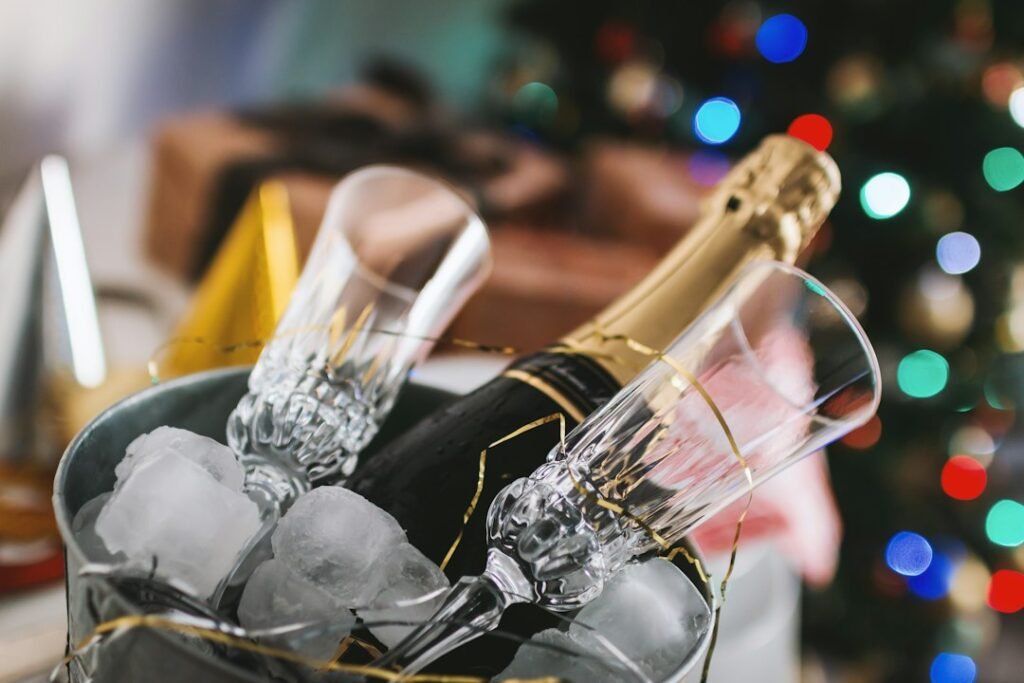Chinese New Year, also known as the Spring Festival, is one of the most important and widely celebrated holidays in China. It marks the beginning of the lunar calendar and is a time for family reunions, feasting, and honoring ancestors. The festival lasts for 15 days, with each day filled with various customs and traditions. It is a time of joy, renewal, and hope for the coming year.
Understanding and respecting cultural traditions is crucial in fostering mutual understanding and appreciation among different cultures. By learning about Chinese New Year traditions, we can gain insight into the rich history and values of Chinese culture. It allows us to connect with others on a deeper level and promotes cultural diversity and inclusivity.
Table of Contents
ToggleThe Significance of the Lunar Calendar
The lunar calendar plays a significant role in Chinese New Year celebrations. Unlike the Western calendar, which follows the solar calendar, the lunar calendar is based on the cycles of the moon. Each year is represented by one of the twelve zodiac animals, which rotate in a twelve-year cycle. The zodiac animal for the current year determines the characteristics and fortunes associated with that year.
The lunar calendar also determines the date of Chinese New Year, which falls on the second new moon after the winter solstice. This means that Chinese New Year can occur anytime between January 21st and February 20th. The lunar calendar’s connection to nature and the changing seasons reflects the importance of harmony with nature in Chinese culture.
15 Vocabulary Items for Talking About Chinese New Year Traditions
- 春节 (Chūnjié) – Spring Festival: The Chinese New Year, marking the beginning of the lunar new year.
- 年夜饭 (Niányèfàn) – New Year’s Eve Dinner: The family reunion dinner on Chinese New Year’s Eve, also known as the “Reunion Dinner.”
- 红包 (Hóngbāo) – Red Envelope: Monetary gifts given in red envelopes during Chinese New Year, symbolizing good luck and warding off evil spirits.
- 灯笼 (Dēnglong) – Lantern: Lanterns are hung to decorate streets and homes, symbolizing the wish for a bright future.
- 鞭炮 (Biānpào) – Firecrackers: Traditionally lit to scare away evil spirits and welcome the new year with a bang.
- 舞龙 (Wǔlóng) – Dragon Dance: A traditional dance performance involving a team of people manipulating a long dragon figure, believed to bring good luck.
- 舞狮 (Wǔshī) – Lion Dance: A performance meant to bring good luck and fortune, involving dancers in lion costumes.
- 年糕 (Niángāo) – New Year Cake: A sweet glutinous rice cake eaten during Chinese New Year, symbolizing a higher income or position.
- 对联 (Duìlián) – Couplets: Pairs of poetic lines affixed on the sides of doors that express hopeful thoughts for the coming year.
- 福 (Fú) – Blessing/Good Fortune: A character often displayed upside-down on doors to signify that fortune will “pour out” on the household.
- 扫尘 (Sǎochén) – Spring Cleaning: The act of cleaning the house thoroughly to remove bad luck and make room for good luck in the new year.
- 除夕 (Chúxī) – Chinese New Year’s Eve: The day before the Chinese New Year, marked by family reunions and various traditions to welcome the new year.
- 拜年 (Bàinián) – New Year Greetings: The tradition of visiting family and friends to exchange greetings and wishes for the new year.
- 压岁钱 (Yāsuìqián) – Lucky Money: Money given to children in red envelopes as part of the New Year celebrations, intended to suppress evil and bring luck.
- 年兽 (Niánshòu) – Nian Monster: A mythical beast believed to eat crops and livestock but is scared away by red colors, firecrackers, and loud noises, integral to the origin of Chinese New Year celebrations.
The Legend of the Nian Monster
One of the most famous legends associated with Chinese New Year is that of the Nian monster. According to legend, there was a terrifying monster named Nian that would come out on New Year’s Eve to devour livestock, crops, and even people. The villagers soon discovered that Nian was afraid of loud noises, bright lights, and the color red.
From then on, the villagers would hang red lanterns, set off firecrackers, and wear red clothing to scare away the Nian monster. This tradition has been passed down through generations and is still practiced today. The legend of the Nian monster teaches us the importance of courage, unity, and using our wits to overcome challenges.
The Importance of Family Reunions
Family is at the heart of Chinese New Year celebrations. It is a time for family members to come together, regardless of distance or differences, to celebrate and honor their ancestors. The reunion dinner on New Year’s Eve is one of the most important meals of the year, where multiple generations gather to share a feast and exchange blessings.
The emphasis on family values during Chinese New Year is a stark contrast to Western holidays, where individualism and personal achievements are often prioritized. Chinese culture places great importance on filial piety and respect for elders, and Chinese New Year provides an opportunity to reinforce these values.
The Tradition of Red Envelopes
One of the most beloved traditions during Chinese New Year is the giving of red envelopes, known as “hongbao” in Mandarin. These red envelopes are filled with money and given to children, unmarried adults, and employees as a symbol of good luck and blessings for the coming year.
The color red is considered auspicious in Chinese culture and is believed to ward off evil spirits. It symbolizes happiness, prosperity, and good fortune. The act of giving red envelopes not only brings joy to the recipients but also fosters a sense of generosity and goodwill within the community.
The Role of Fireworks in Chinese New Year Celebrations

Fireworks are an integral part of Chinese New Year celebrations. They are believed to scare away evil spirits and bring good luck for the coming year. The tradition of setting off fireworks dates back thousands of years and has become a spectacular display of lights and sounds.
The cultural significance of fireworks lies in their ability to create a festive atmosphere and bring people together. The loud noises and bright lights are believed to awaken the dragon, a symbol of power and good luck in Chinese culture. Fireworks also serve as a way to bid farewell to the old year and welcome the new one with a bang.
The Meaning Behind Traditional Foods
Food plays a central role in Chinese New Year celebrations, with each dish carrying its own symbolism and meaning. Some of the most common traditional foods include dumplings, fish, spring rolls, and rice cakes. These foods are believed to bring good luck, prosperity, and abundance for the coming year.
For example, dumplings are shaped like ancient Chinese gold ingots and are believed to bring wealth and prosperity. Fish symbolizes surplus and abundance, while spring rolls represent wealth and good fortune. Rice cakes, on the other hand, symbolize growth, progress, and reaching new heights.
The Cultural Significance of Dragon and Lion Dances
Dragon and lion dances are an integral part of Chinese New Year celebrations. These vibrant and energetic performances are believed to bring good luck and drive away evil spirits. The dragon dance involves a team of performers holding up a long dragon puppet, while the lion dance features performers inside a lion costume.
The dragon is considered a symbol of power, strength, and good luck in Chinese culture. The lion is believed to have the power to ward off evil spirits and bring blessings. The dances are accompanied by the rhythmic beating of drums, cymbals, and gongs, creating an electrifying atmosphere that captivates both participants and spectators.
The Practice of Cleaning the House for Good Luck
Cleaning the house before Chinese New Year is an important tradition that symbolizes sweeping away bad luck from the previous year and making way for good luck in the coming year. It is believed that cleaning the house before the festival will bring good fortune and blessings.
The act of cleaning is not just physical but also spiritual. It is a way to purify the home and create a clean and harmonious environment for the family. The tradition of cleaning the house for good luck reflects the Chinese belief in the importance of cleanliness, order, and balance in one’s surroundings.
The Custom of Wearing New Clothes for the New Year
Wearing new clothes during Chinese New Year is a tradition that symbolizes a fresh start and new beginnings. It is believed that wearing new clothes will bring good luck and ward off evil spirits. Red is the most popular color for Chinese New Year clothing, as it is considered auspicious and represents joy and happiness.
The custom of wearing new clothes also reflects the importance of self-care and personal grooming during the holiday season. It is a time to dress up, look one’s best, and present oneself in a favorable light. By wearing new clothes, individuals are able to express their hopes and aspirations for the coming year.
Chinese New Year traditions are deeply rooted in history, culture, and symbolism. They provide valuable insights into Chinese values, beliefs, and customs. By understanding and respecting these traditions, we can foster cultural understanding, appreciation, and inclusivity.
Participating in Chinese New Year celebrations allows us to connect with others on a deeper level and learn from different cultures. It is an opportunity to broaden our horizons, challenge our assumptions, and embrace diversity. By embracing cultural celebrations like Chinese New Year, we can create a more inclusive and harmonious society.
If you’re interested in learning more about Chinese traditions and culture, you might also enjoy reading the article “Chinese New Year and Symbol Use.” This article explores the significance of symbols in Chinese New Year celebrations and how they are used to bring luck and prosperity. From red envelopes to dragon dances, this article provides insights into the rich symbolism behind these traditions. Check it out here.








